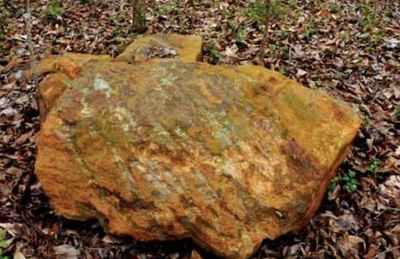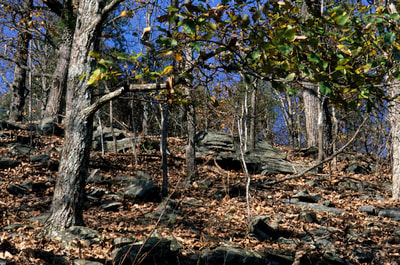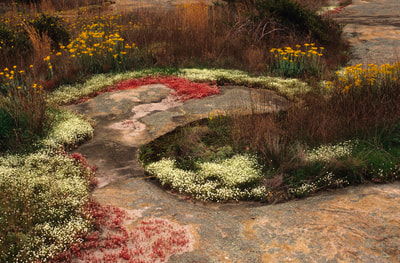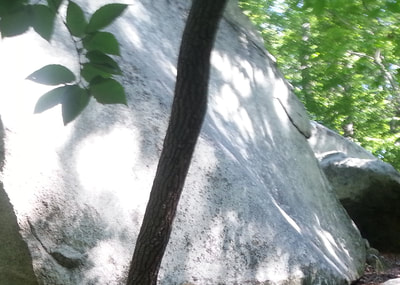Impact of Rock Type in Georgia Piedmont and Blue Ridge on Plant Composition
The Piedmont and Blue Ridge are composed of an agglomeration of pieces of the ancient North American continent, island arcs, oceanic crust, and scraps of old continents that were repeatedly metamorphosed, folded, faulted and welded together during collisions between North America, Africa, and smaller pieces of the earth's crust.
These many different sources of bedrock have weathered to a great diversity of soil types that range on a gradient from very acidic to nearly alkaline. These different soil conditions support a variety of plant communities.
Plant Communities and Rock Type
Different plant communities evolve to survive in the different moisture and nutrient conditions created by the weathering of different rock types. Rocks that weather into more acidic, lower pH soils, often encourage plants of the Ericaceae (heath) family, which includes blueberries, azaleas, mountain laurel, rhododendrons and sourwood.
Rocks that weather to soils with a higher pH and contain more bases, such as potassium and calcium, support a more diverse array of plants. There are many "indicator species" that, when seen in abundance on the landscape, indicate more bases in the soil. These include redbud, eastern red cedar, and white ash; many others are described under particular natural communities. In some cases, base-rich soils can weather to very clayey soils that drain poorly, but more often in the Georgia Piedmont, the bases are mixed with organic materials and other minerals to create more congenial conditions.
|
.Metamorphic Rocks form when any type of rock is compressed and heated, and so re-crystallize, usually during mountain building events when continents collide. Mafic metamorphic rocks have high levels of magnesium and iron, and often abundant potassium and calcium. Felsic rocks are usually less fertile. Some common metamorphic rocks and their influence on plant composition are:
Quartzite is composed of quartz, usually from metamorphosed sandstone. Erodes to sterile, sandy soils that encourage many acid-loving plants. Schist: metamorphic rock in which the mineral grains align in one direction. Most often felsic, composed of mica and quartz soils Gneiss: any metamorphic rock with bands of different mineral composition, usually bands of light-colored quartz and feldspar (felsic) minerals alternating with dark-colored bands of black mica (biotite) and are non-mafic, with modest fertility. Some gneiss in Georgia, although unusual, contains the mineral hornblende, which is mafic and will support a higher diversity of species than biotitie gneiss. Amphibolite: a mafic, black rock (that will weather to a red surface and bright orange soils) composed of hornblende, which contains varying proportions of potassium, sodium, calcium, magnesium, and iron. Amphibolite weathers to fertile soils and supports diverse plant communities. Marble: forms from metamorphosed limestone (calcium-carbonate). Soils derived from marble are rich in calcium and host special plant communities - even thin beds of marble can create diverse communities. It is sparsely scattered in the the Georgia Piedmont and Blue Ridge. Igneous Rocks form when magma (molten rock) slowly cools and solidifies within the earth's crust, or rapidly "freezes" when it is extruded as lava and ash at the earth's surface. Granite: a felsic rock made up of quartz and feldspars. Modest fertility, with some calcium and potassium contained in the feldspars and minor minerals in the granite. Gabbro: an intrusive igneous rock that originates deep within the oceanic crust. It is much heavier than granite, with much more magnesium and iron. Gabbro is very rare in Georgia. It is found in a small area in the western Piedmont, where it encourages the rare Upland Depression Swamp (Flatwoods) natural community. Gabbro metamorphoses into amphibolite, which is much more common in Georgia. |
|









